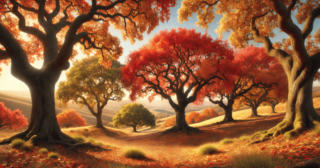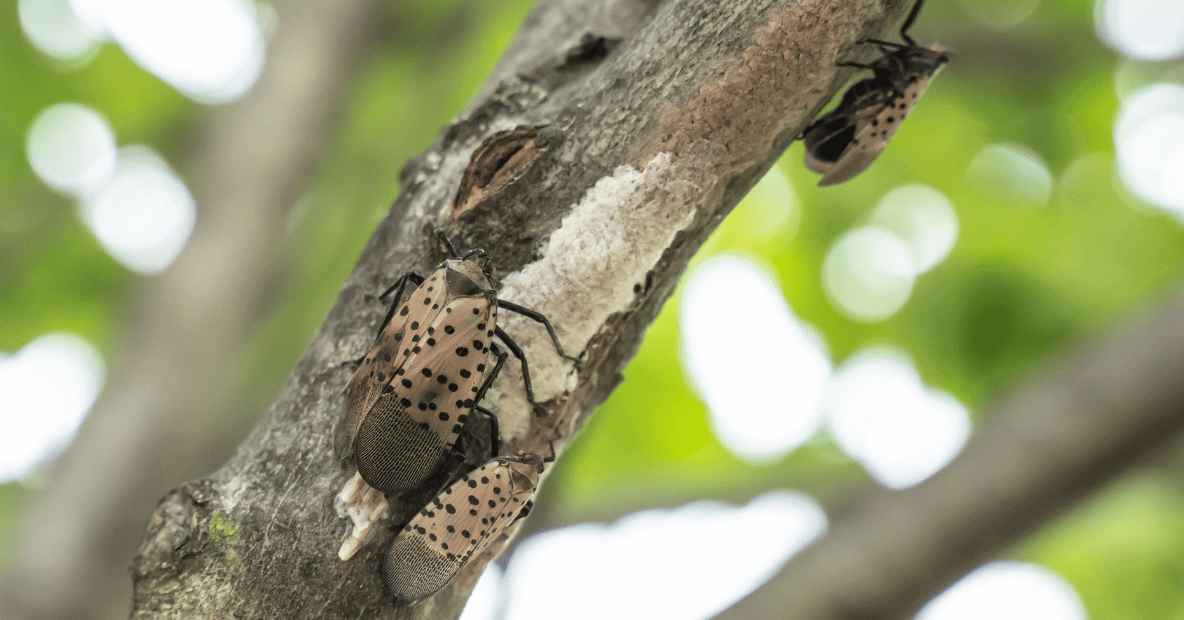Oak trees are a popular choice for homeowners and landscapers. They provide shade, beauty, and vibrant fall colors. If you’re looking for oak trees that shine in the fall, here are some of the best options.
Oak Trees with Notable Fall Foliage
Oak trees are a stunning addition to any landscape, especially in the fall when their foliage transforms into a vivid display of colors. The Pin Oak (Quercus palustris) is known for its bronze and red tones, while the White Oak (Quercus alba) offers a rich burgundy. The Northern Red Oak (Quercus rubra) lights up with bright red leaves, and the Scarlet Oak (Quercus coccinea) showcases deep scarlet hues.
Species like the Bur Oak (Quercus macrocarpa) and Swamp White Oak (Quercus bicolor) also add golden and amber shades to the season. These trees, part of the Fagaceae family, not only provide breathtaking fall colors but also thrive in diverse environments, making them ideal for urban and rural settings alike.
- White Oak
Fall Color: Red to burgundy.
White oaks are known for their stately appearance. In the fall, their leaves turn stunning shades of red and burgundy. These trees thrive in well-drained soils and prefer full sun. They are slow-growing but can live for hundreds of years, making them a great investment for your yard.
2. Bur Oak
Fall Color: Yellow to golden-brown.
Bur oaks are hardy trees that grow well in various conditions. Their large, lobed leaves turn golden-brown in the fall. These trees are drought-tolerant and can handle urban pollution. With their thick bark and unique acorns, bur oaks are both attractive and resilient.
3. Pin Oak
Fall Color: Red to bronze.
Pin oaks are fast-growing trees that provide brilliant fall displays. Their glossy green leaves turn bright red or bronze before dropping. Pin oaks grow best in moist, acidic soils and need plenty of sunlight. They’re an excellent choice for creating a bold autumn statement.
4. Black Oak
Fall Color: Deep red to orange.
Black oaks are native to many parts of the United States. In autumn, their leaves transform into fiery shades of orange and red. These trees grow best in sandy or well-drained soils. They’re also an important food source for wildlife, attracting birds and squirrels.
5. Live Oak
Fall Color: Evergreen with minimal color change.
Live oaks are unique among oaks. They keep their leaves year-round, so they don’t offer vibrant fall color. Instead, their dark green leaves provide a consistent backdrop for other seasonal plants. Live oaks are commonly found in southern regions and are known for their sprawling branches.
6. Red Oak
Fall Color: Bright red.
Red oaks are a favorite for their striking fall colors. The leaves turn vivid red, creating a stunning contrast against the autumn sky. Red oaks are fast growers and adapt to a variety of soil types. They’re perfect for anyone looking to add instant beauty to their landscape.
Leaf Color Change in Fall
Leaf color change in the fall is a natural phenomenon driven by biology and the environment. As daylight decreases and temperatures cool, chlorophyll, the green pigment in leaves, breaks down. This allows other pigments, like carotenoids and anthocyanins, to become visible. Carotenoids create yellow and orange hues, while anthocyanins are responsible for reds and purples. Factors like geographic location, soil conditions, and weather patterns also play a role. For example, sugar maples and red maples are known for vibrant reds, while trees like sawtooth oaks showcase warm yellows. Cool nights and sunny days enhance these colors, making autumn landscapes unforgettable.
Choosing Trees for Fall Color
When selecting an oak tree, consider these factors:
- Space: Some oaks, like bur oaks, need room to spread out.
- Soil: Red and white oaks prefer well-drained soil. Pin oaks do better in acidic soils.
- Climate: Live oaks thrive in warmer areas, while black oaks handle colder regions.
- Purpose: Do you want shade, fall color, or a tree that supports wildlife?
By answering these questions, you’ll find the best oak for your needs.
Why Plant Oak Trees?
Oak trees have many benefits:
- Shade: They reduce cooling costs in summer.
- Wildlife Habitat: Oaks support birds, squirrels, and other animals.
- Long Life: Most oaks live for generations.
- Beauty: Their fall colors enhance any landscape.
Tips for Planting Oak Trees
Planting an oak tree requires careful planning and care. Start by selecting a location with plenty of sunlight and enough space for the tree to grow. Dig a hole that’s twice as wide as the root ball to give the roots room to spread. Water consistently during the first few years to keep the soil moist but not soggy. Adding mulch around the base helps retain moisture and regulate soil temperature. Oaks don’t need heavy pruning, so only remove dead or damaged branches. With the right care, your oak tree will flourish for decades, adding beauty and shade to your landscape.
Contact Strobert Tree Services
Planting an oak tree is a commitment to your landscape’s future. Strobert Tree Services is here to help you nurture that investment. Whether it’s pruning for health, safely removing a damaged tree, or treating pests and diseases, our certified arborists have you covered. Contact us today for a free consultation, and let’s work together to keep your trees thriving and your yard beautiful.











